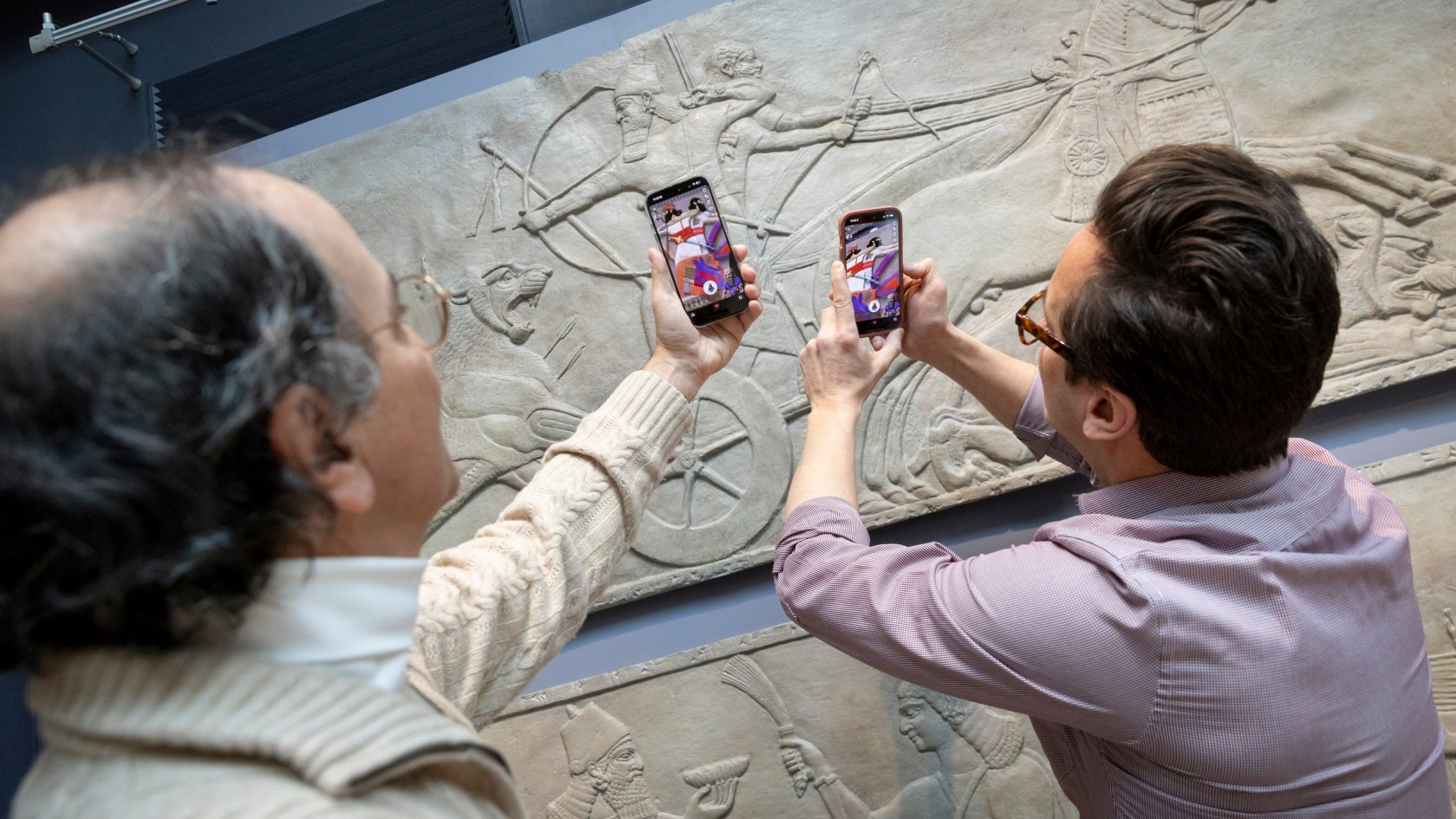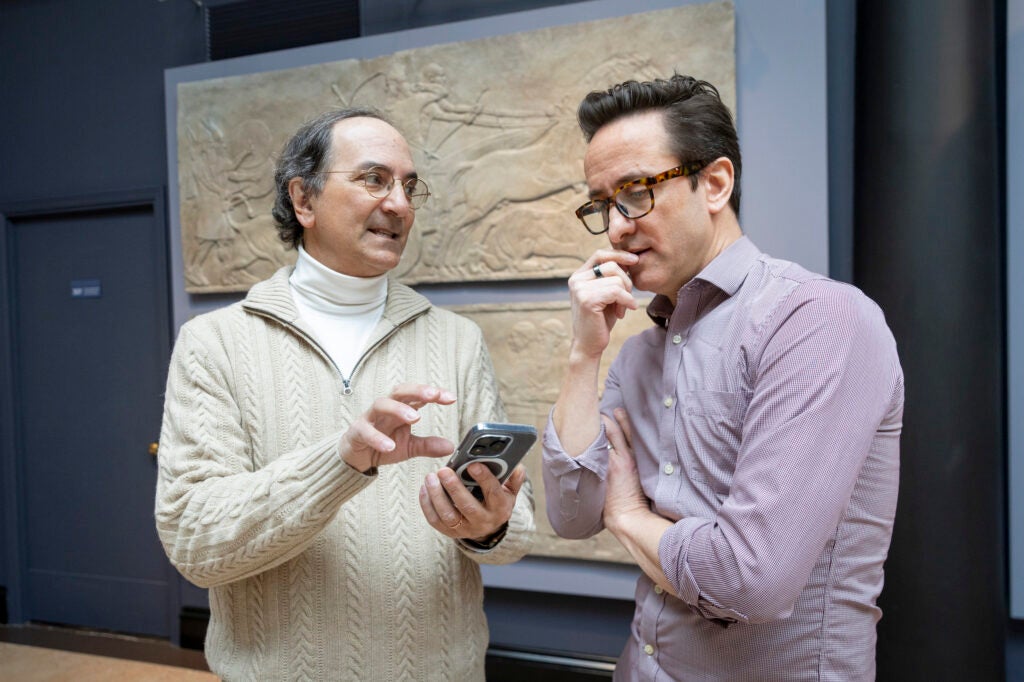
Through the AR app, Peter Der Manuelian (left) and Adam Aja show how soldiers come to life.
Photos by Niles Singer/Harvard Staff Photographer
Art from a long-dead civilization springs back to life
Moving experience at the Museum of the Ancient Near East adds ‘layer of mixed reality’ to exhibits
Opening the Snapchat app in this third-floor museum gallery summons a moment of unexpected magic.
Soldiers, carved on replicas of panels that once decorated the walls of ancient Assyrian palaces, come to life and send a volley of arrows to rain on their enemies. Royal attendants lead horses by richly colored bridles. The king pours a red wine offering over the bodies of dead lions as harpists strum nearby.
The Harvard Museum of the Ancient Near East recently launched an augmented reality Snapchat Lens that offers a new way to experience their “From Stone to Silicone” exhibition. Visitors can view the AR on a smartphone or tablet anytime by searching “Intimidation Art” in the Snapchat app and aiming the device at the art. Every detail of the scenes — from colors used in the animation to music playing in the background — is based on historical research.
“One of our goals at the museum is to enhance the visitor experience with interactive and immersive technologies where appropriate,” said Peter Der Manuelian, director of the museum. “Not to compete with the art, but rather to add a layer of mixed reality to our exhibits that we hope will be engaging, informative, and fun.”

“The Art of Intimidation: Journey to Assyria” immerses visitors in the ancient city of Nineveh — located in modern-day Iraq — circa 640 B.C. It even gives them an assignment: to deliver a critical message to the king. All are welcomed by palace overseer Dan-Assur, an animated character who directs visitors’ attention to the wall art while they await the busy king.
Carved with scenes of battle, hunting, and ceremony, the wall panels are examples of powerful royal propaganda. But they also shed insight on everyday life in the ancient Near East.
Adam Aja, the museum’s chief curator, wanted to use modern storytelling techniques to engage audiences in the history of the panels. Part of his inspiration came from video games like “Assassin’s Creed: Origins,” which is set in ancient Egypt, and “Apotheon,” which is animated in the style of ancient Greek vase painting.
“As a player in a game, you create a character that you inhabit for the time you’re playing that game,” Aja said. “You roam the world and you become invested in the success of that character and the story as it plays out. I thought, maybe there was some way we can provide that kind of experience for our visitors.”
Gojko Barjamovic, senior lecturer on Assyriology in the Near Eastern Languages and Civilizations Department, co-wrote the script with Aja, incorporating ancient Assyrian phrases such as the greeting “Good health, visitor.” Narration was voiced by Associate Professor of Near Eastern Languages and Civilizations Shady Nasser, a specialist on Arabic literature and Islamic civilizations.
“Even though the narrator is speaking in English, there is still a turn of phrase that will strike the modern ear as, ‘Well, that sounds a little archaic,’” Aja said. “It’s actually from Assyrian text.”
Assyriologist Shiyanthi Thavapalan from Vrije Universiteit Amsterdam advised on the colors based on her knowledge of recent infrared and ultraviolet imaging techniques that can detect remnants of ancient pigment. Archaeomusicologist Richard Dumbrill, formerly of the University of London, advised on the period music and soundscape. Dan-Assur’s character design was inspired by Donald Barkho, an Assyrian costumes and weaponry specialist and content creator who lives in Australia.
“It’s been a team of people from literally around the world that we’ve tapped into, to make this a bit more interesting and authentic, and based upon scholarship,” Aja said.
This isn’t the museum’s first foray into augmented reality. One floor down, visitors can use an app called “Dreaming the Sphinx” to immerse themselves in a story told by hieroglyphs inscribed on a replica of the “Dream Stela,” a stone slab that sits between the paws of the Great Sphinx in Giza.
“The visitors to museums approach the art in different ways,” Aja said. “I’m hopeful that even if this doesn’t appeal to every single museum visitor, that it will provide a new avenue of exploration for those who are interested.”




